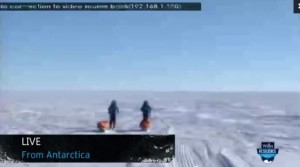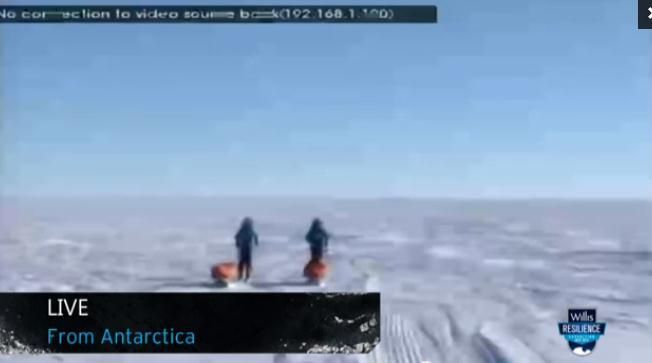Antarctica – It is an extraordinary journey that has involved two years of preparation and planning, but at 0830 GMT on Friday, 19-year-old explorer Parker Liautaud, a sophomore at Yale University along with his expedition partner, guide and veteran explorer Doug Stoup, departed the Ross Ice Shelf in an attempt to set a new world record for the fastest-ever walk from the edge of Antarctica to the South Pole. If successful, Liautaud will also become the youngest person to ever reach both the North and South Poles on foot.
“It is extraordinary to think that after all the careful planning and preparation we have finally started our journey to the South Pole on foot. Six hundred and forty kilometers is all that stands between us, the South Pole and a new world record,” said Liautaud.
The pair are attempting to make the 640km journey in 22 days, each pulling a sled weighing over 80kg (176 lb.) that contains all of the needed food and supplies to survive on their epic walk.

With the assistance of technology never used before for this purpose, Liautaud and Stoup’s departure from the Ross Ice Shelf was captured live on camera and aired across the world on the daily live Willis Resilience TV Show, which emanates from a state-of-the-art broadcast studio constructed in the lobby of the Willis Building, home to global risk advisor and insurance broker Willis Group Holdings in the heart of London.
While Liautaud and Stoup will make their planned 400-mile trek on foot and unsupported, their progress will be tracked every step of the way by a 2.6-ton custom designed 6×6 Toyota Hilux truck, the “Ice Broker,” capable of transmitting live video, telemetry, data and biometrics around the world via satellite. News of the expedition, and related programming, is being broadcast on the daily one-hour television show hosted on the website www.willisresilience.com which premiered on December 2. As of today, 16 separate one-hour shows are planned through December 23.
Before starting their journey, Liautaud, Stoup and their support crew — the Ice Broker Driver and Mechanic Eyjo Furteitsson, cinematographer Paddy Scott and communications specialist Nathan Hambrook-Skinner — had to first reach the elusive starting point for the walk, the Ross Ice Shelf on the edge of Antarctica. The Ross Ice Shelf, nearly the size of France, is named for Captain Sir James Clark Ross, who discovered it on January 28, 1841. The Ice Shelf has fascinated scientists ever since.
To get to the Ross Ice Shelf, the team traveled in Ice Broker a total of 1790km from Union Glacier to the South Pole down to the Ross Ice Shelf in order to undertake a coast-to-pole-to-coast transect of Antarctica. During that bumpy crossing of the Antarctic continent over vast fields of sastrugi, or ice waves, the team were collecting snow samples for three scientific research programs, all of which aim to collect valuable data to contribute to our understanding of global climate patterns. One of the team’s first jobs on the ice was to deploy the ColdFacts 3000BX, a lightweight weather station that has never before been used in Antarctica. The device has been relaying metrological data every 30 minutes. Along the way the team was also collecting snow samples for research purposes.
“All of us armchair explorers, who have read of the exploits of Shackleton, Scott and Amundsun, watched in awe from the middle latitudes as Parker and Doug began their audacious journey this morning,” said Josh King, Chief Communications Officer for Willis Group. “The difference, of course, is that more than a century ago, when Amundsen reached the South Pole in December 1911, the world waited for months for news of their travels. Thanks to the Ice Broker, and the Iridium satellite rig sending signals aloft from its roof, we’re watching the drama unfold in real time, with live pictures coming in from a part of the planet that very few humans have ever stepped.”

